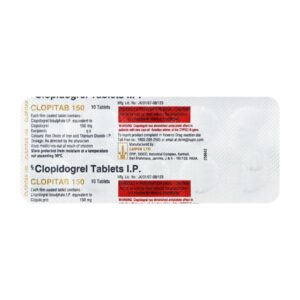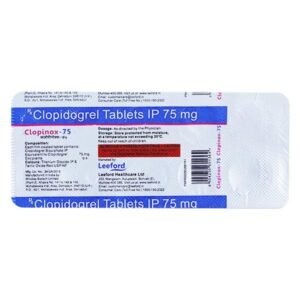CLOPIDOGREL
CLOPIDOGREL: Clopidogrel is an antiplatelet medication commonly used to reduce the risk of heart attack and stroke in individuals with a history of cardiovascular disease. It is sold under the brand name Plavix.
The mechanism of action of clopidogrel involves inhibiting the ability of platelets to form blood clots. It specifically works by irreversibly binding to the P2Y12 receptor on platelets, thereby preventing the activation and aggregation of platelets. By doing so, it inhibits the clumping together of platelets, which reduces the likelihood of clot formation within blood vessels.
The typical dose of clopidogrel for most conditions is 75 mg per day, usually taken orally. It may be prescribed alongside aspirin or other blood thinning medications depending on the patient’s specific medical condition.
As with any medication, clopidogrel can have side effects. Some commonly reported side effects include:
1. Bleeding: Clopidogrel reduces blood clotting, so it can increase the risk of bleeding. This can manifest as nosebleeds, bleeding gums, increased bruising, or prolonged bleeding time.
2. Upset stomach: Some individuals may experience nausea, vomiting, diarrhea, or indigestion when taking clopidogrel.
3. Rash or itching: Skin reactions, such as rashes or itching, can occur in rare cases.
4. Headache or dizziness: Some individuals may experience headaches or dizziness while taking clopidogrel.
5. Increased risk of bleeding after surgery: Clopidogrel can increase the risk of bleeding during and after surgical procedures. It is important to inform healthcare providers about its use prior to any surgical interventions.
It is essential to discuss all medications, including over-the-counter drugs and herbal supplements, with a healthcare provider before starting clopidogrel to prevent potential interactions and adverse effects. Additionally, individuals with bleeding disorders or who are at high risk of bleeding may require special monitoring while taking clopidogrel.








